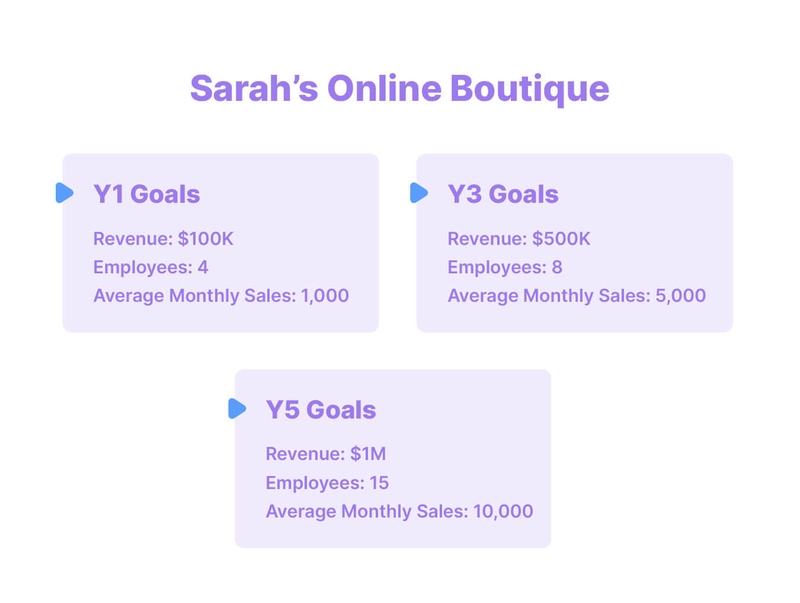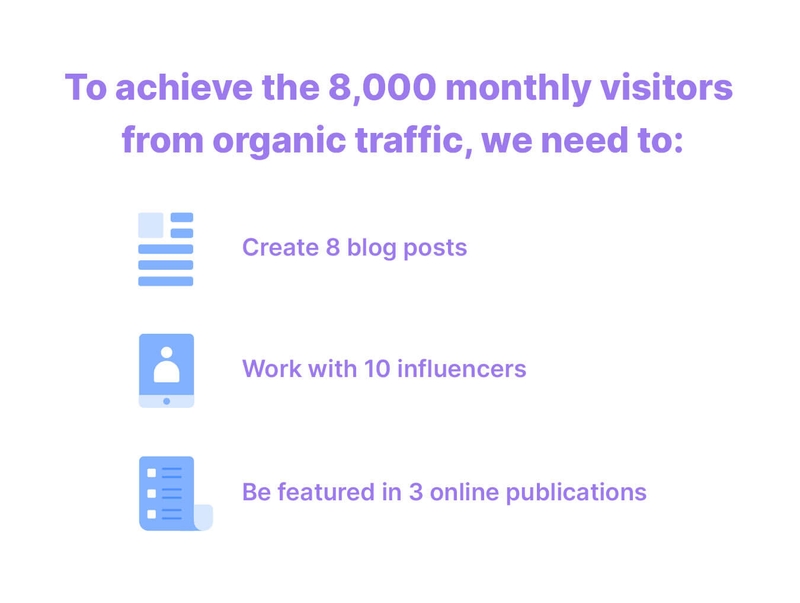What Is a Growth Strategy and How to Develop One?
Growth is fundamental to any business; you may have a good service or product, but without a strategy, you have no action plan on how you will achieve your goals and grow. In this blog post, we will look at what a growth strategy is and examine how to create an effective one for your company.
7 min read

Tatiana Ogurtsovskaia
Apr 15, 2021

Growing a business is no walk in the park; according to the Bureau of Labor Statistics, 20 percent of small businesses fail within the first year, meaning to effectively grow your company, you need more than just a good product and determination; you need a solid growth strategy.
A growth strategy is focused on the big picture; it gives your company a purpose, evaluating the problems of today and tomorrow, creating a roadmap for long-term success. Although you should design a growth strategy to look into the future, there should be short-term goals to hit along the way, guiding you on your path to growth.
Before we look at how to create a growth strategy, we will first look at what a growth strategy is.
What Is a Growth Strategy?
A growth strategy is designed to be aligned with the overall company strategy, focusing on how to help companies expand their business and obtain a larger share of the market.
Successful growth strategies are the product of marketing, management, sales, and product management collaborating to create an action plan to achieve growth goals such as bringing in more revenue, growing your team, and increasing brand awareness. Along with providing a roadmap on how to achieve your growth goals, a growth strategy is important as it identifies risks, helping to keep you on track if any challenges arise.
Types Of Growth Strategies
There are typically four types of growth strategies, known as the Ansoff Matrix, each looking at a different way of growing your business.

Market Penetration
Market penetration is the section of a growth strategy that presents the lowest risk. It evaluates how you can increase your market share in the current market, essentially how you can sell more products to your existing customers. Common techniques include lowering prices, extending hours, or creating bundles. A growth strategy example of market penetration would be Coca-Cola running a campaign where they personalize the cans of drink by putting people’s names on them, attracting a larger portion of their existing demographic.
Market Development
Market development involves looking at how you can expand your user base through new segments of the market; this could be through international expansion, a new demographic of customers, or setting up an online store when you previously had been brick and mortar only. An example of using market development as a growth strategy would be Uber who offered a $10 discount on your next ride if you referred a customer, enabling them to grow their customer base quickly and access new demographics of customers.
Product Development
Product development involves developing new products for your existing market. New products should be designed to recapture your audience’s attention or solve a problem that you have identified. An example of strategic growth using product development is Google, which started out as a B2C business where consumers could search for websites; its growth strategy was to expand its existing product to include ‘Adwords,’ which caters to B2B customers looking to advertise their products and services.
Diversification
Diversification is the riskiest section of a growth strategy; however, the greatest risk is often met with the greatest reward. The diversification section is where you develop new products for new markets. A good example of driving growth through diversification is Amazon, which started out as a simple marketplace that sells online goods but has since expanded into an online streaming service and an online web hosting platform.
While these four growth strategies are a good foundation for you to base your company’s growth strategy on, your strategy should cater to your company’s specific goals, meaning that you may combine more than one strategy or step outside the box entirely to create a strategy that works for you.
How To Develop A Growth Strategy
To effectively develop a growth strategy, you need to do more than simply define your company’s direction. You need to develop an actionable plan which is a roadmap on how you will achieve these goals.
Here are five steps to help you develop your growth strategy:
Step One: Define Your Goal
The road to growth is only achievable if you have clearly defined your company’s goals. Growth can be defined in a number of ways; therefore, your goals could be anything from an increase in sales, acquiring a larger customer base, diversification of your product range, or transforming from a B2B to a B2B2C; it can even be a combination of all four. While your business growth goals should be aspirations evaluating where you want to be in a specific period of time, it is important to make sure that they are realistic and achievable for your company.
Example:
Sarah’s Online Boutique
Y1 Goals:
Revenue: $100K
Employees: 4
Average Monthly Sales: 1,000
Y3 Goals:
Revenue: $500K
Employees 8
Average Monthly Sales: 5,000
Y5 Goals:
Revenue: $1M
Employees 15
Average Monthly Sales: 10,000

Step Two: Identify Metrics To Measure Your Growth
Part of defining your goals is making sure that they are measurable, so you need to set KPIs and have them set at strict deadlines. You will only be able to evaluate if your strategy is on track if you can see the numbers. When creating your KPIs, make sure that they are quantifiable and, most importantly, directly related to your goals.
EXAMPLE:
To reach the Y1 revenue goal of 1,000 average monthly sales, our metric will be:
- To have 8,000 monthly visitors from organic traffic to the website.
Step Three: Conduct Market Research
Once you have chosen how you want to grow, you need to do your market research to validate your assumptions and determine if growth is both necessary and feasible. Market research evaluates the current market and gains insights into the competitive landscape, the industry trends, the risks and looks at where the industry is forecasted to be heading.
When validating the market, you should conduct quantitative and qualitative research, examine industry reports, customer data, and conduct surveys, focus groups, and interviews with both current and potential customers. Along with giving you insights into the market, the information you gather will help define aspects of your strategy such as timeline and budget; you might also find that you need to adjust your goals after conducting your market research.
Step Four: Create An Action Plan
Once you have identified and validated your goals, it is time to create an action plan, mapping out how you will achieve these goals. Creating an action plan involves identifying methods and tactics that will help you achieve your objectives; these methods or tactics will vary your business structure and goals. For example, if customer acquisition is your overall goal, you may need to develop a sales plan, or if you are planning to roll out a new product, you will need to create a go-to-market strategy.
Example:
To achieve the 8,000 monthly visitors from organic traffic, we need to:
- Create 8 blog posts
- Work with 10 influencers
- Be featured in 3 online publications.

Step Five: Determine What Resources and Growth Tools You Will Need
Along with having the methods on how you are going to achieve your goal, you should include what resources you need to achieve your goal; for example, you need to define your budget and define roles and responsibilities for your team.
There are also a number of tools that can help you to achieve your growth goals faster; for example, you may need software such as a CRM to manage relationships, analyze data and monitor your sales pipeline.
Conclusion
There is no one road to growth; however, having a solid growth strategy and following it is the best chance of success. A growth strategy is mapping out a big picture, creating a concrete plan that evaluates how you are going to get from A to B, getting the best results with the lowest risk and the least amount of effort.
As a growth strategy cannot succeed without effective execution, to ensure that you maximize results and stay on track, make sure that you implement actionable steps and measure your success through regular reviews of your KPIs. If you find that you are missing the mark, conduct a review of your growth strategy and adjust accordingly.


